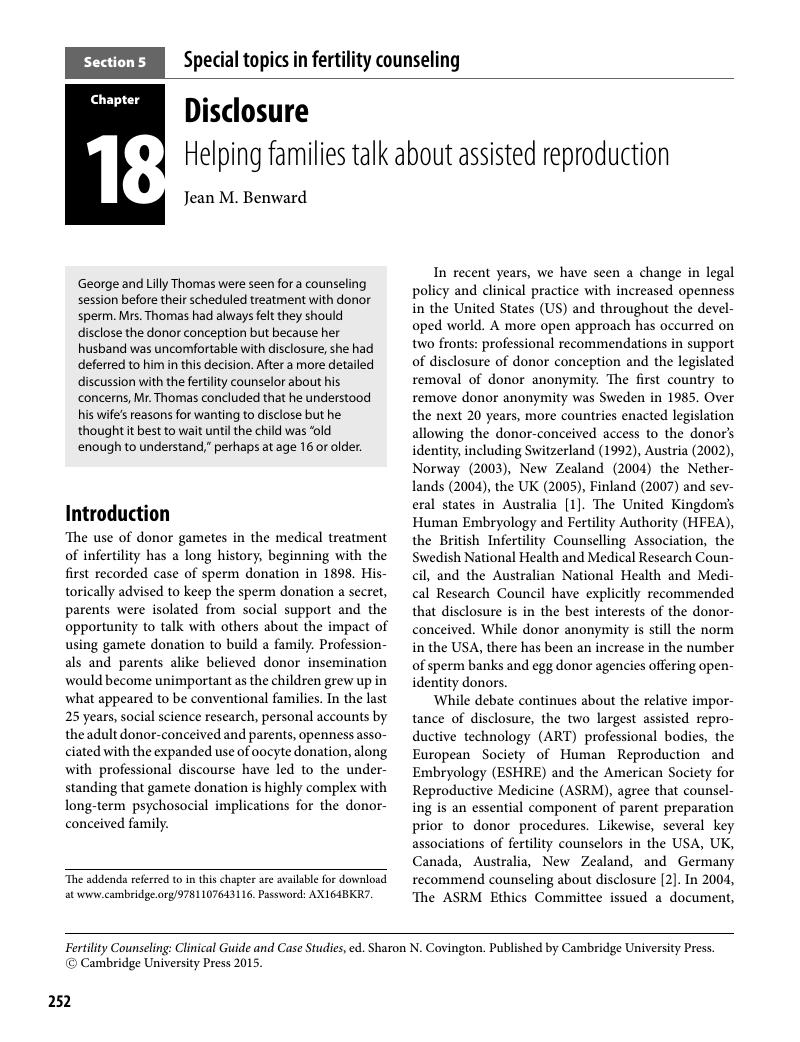Book contents
- Fertility CounselingClinical Guide and Case Studies
- Fertility Counseling
- Copyright page
- Dedication
- Contents
- Contributors
- Foreword
- Book part
- Section 1 Introduction
- Section 2 Therapeutic approaches
- Section 3 Third party reproduction: assessment and preparation
- Section 4 The expanding image of families
- Section 5 Special topics in fertility counseling
- Chapter 15 Fertility preservation counseling
- Chapter 16 Pregnancy and loss counseling
- Chapter 17 The view from thefertility counselor's chair
- Chapter 18 Disclosure
- Section 6 Practice issues
- Glossary
- Index
- References
Chapter 18 - Disclosure
Helping families talk about assisted reproduction
from Section 5 - Special topics in fertility counseling
Published online by Cambridge University Press: 05 May 2015
- Fertility CounselingClinical Guide and Case Studies
- Fertility Counseling
- Copyright page
- Dedication
- Contents
- Contributors
- Foreword
- Book part
- Section 1 Introduction
- Section 2 Therapeutic approaches
- Section 3 Third party reproduction: assessment and preparation
- Section 4 The expanding image of families
- Section 5 Special topics in fertility counseling
- Chapter 15 Fertility preservation counseling
- Chapter 16 Pregnancy and loss counseling
- Chapter 17 The view from thefertility counselor's chair
- Chapter 18 Disclosure
- Section 6 Practice issues
- Glossary
- Index
- References
Summary

- Type
- Chapter
- Information
- Fertility CounselingClinical Guide and Case Studies, pp. 252 - 264Publisher: Cambridge University PressPrint publication year: 2015
References
- 3
- Cited by



